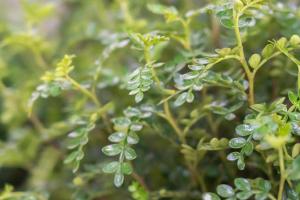Introduction
Potted plants are a great way to add a touch of green to your living space, but they can also be a breeding ground for fungi. Fungi thrive in damp and warm conditions, which are often found in potted plants. If left unchecked, fungus can spread throughout the plant and cause irreversible damage to the roots and soil. In this article, we will discuss various methods on how to kill fungus in potted plants.
Identifying Fungus in Potted Plants
Before we go over ways to kill the fungus, it's important to know how to identify it. Some common signs of fungus in potted plants include yellowing leaves, stunted or wilting growth, and a foul odor. You may also notice a black, sooty mold on the leaves or soil. If you suspect your plant has a fungal infection, it's important to act quickly to prevent it from spreading.
Removing Infected Plant Material
The first step in getting rid of fungal infections in your potted plants is to remove any infected plant material. This could include leaves, stems, or even the entire plant if the infection is severe. Be sure to dispose of the infected plant material carefully, as fungus spores can easily spread to other plants.
Improving Air Circulation
Fungus thrives in areas with poor air circulation, so improving the airflow around your potted plants can help control its growth. You can do this by placing a fan near your plants or by moving them to a location with better ventilation. Avoid placing plants too close to one another as this can also impede air circulation.
Reducing Moisture
As mentioned earlier, fungi love damp environments, so it's important to reduce moisture levels around your potted plants. Be sure to water your plants only when necessary, and avoid over-watering. You can also add a layer of gravel or sand to the top of the soil to help absorb excess moisture. If you're using a saucer or tray to catch water, be sure to empty it out regularly to prevent the soil from becoming waterlogged.
Applying Fungicides
If the fungal infection is severe, you may need to apply a fungicide to your potted plant. Fungicides can help kill the fungus and prevent it from spreading further. Be sure to choose a fungicide that is safe to use on your specific type of plant, and always follow the instructions carefully. It's also a good idea to wear gloves and protective clothing when applying fungicides.
Conclusion
Fungal infections can be a serious threat to your potted plants, but with the right care and attention, they can be controlled. Remember to keep your plants well-ventilated, reduce moisture levels, and remove any infected plant material promptly. If the infection is severe, consider using a fungicide to help kill the fungus and stop it from spreading. With these tips, you can keep your potted plants healthy and fungus-free.

 how many times do yo...
how many times do yo... how many planted tre...
how many planted tre... how many pine trees ...
how many pine trees ... how many pecan trees...
how many pecan trees... how many plants comp...
how many plants comp... how many plants can ...
how many plants can ... how many plants and ...
how many plants and ... how many pepper plan...
how many pepper plan...
































